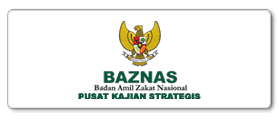TEORI INVISIBLE HAND ADAM SMITH DALAM PERSPEKTIF EKONOMI ISLAM
DOI:
https://doi.org/10.21580/economica.2012.2.2.850Keywords:
Invisible hand, Ekonomi Islam, Adam Smith, kapitalismeAbstract
Adam Smith as the founder of modern economics laid the basic foundation for economic development through the capitalist system in which capital factor used as a measuring tool for economic success. One opinion of Adam Smith "the theory of invivisble hand" in economic activity every individual has the full authority of his property and free use of economic resources in ways that he likes, disregarding the interests of the general public. This shows that capitalism has the right to have a peribadi an unlimited of the means of production, which is the driving force personal profit. Islam is essentially bringing the teachings to human life that comes the Koran and Hadith. Economic activity in the view of Islam is the guidance of life, in addition it is also a suggestion that has a dimension of worship. Wealth (material wealth) is trustworthy, thus the mandate that God bestowed it must be used together, not to suck other people or enslave other people. Islam allows every person to own property in person, but as it also enjoins on his property was to be used collectively (together), alms or spend a portion of such property in Allah. Economic activity in the view of Islam is not only material but more than that - "material plus" -. Islam has always stressed that every person living in a lawful manner. Islam also does not prohibit untukmelakukan economic activity, but Islam provides guidance and guidance in the form of Islamic values.
Downloads
References
Abdul Mannan, M,(1995), Teori dan Praktek Ekonomi Islam, Terj. M.Nastangin, Dana Bakti Wakaf, Yogyakarta.
Achmad Ramzy Tadjoeddin, dkk., (1992), Berbagai Aspek Ekonomi Islam, Tiara Wacana dan P3EI UII, Yogyakarta.
Alfred W. Stonier, Douglass C. Hague, (1984), Teori Ekonomi, Ghalia Indonesia, Jakarta.
Daniel R. Fusfeld, (1972), The Age of the Economist, Ideas that Shape the Way we Live, Pyramid Publication, New York.
Dawam Raharjo, M , (1986), Islam dan Transformasi Sosial-Ekonomi, LSAF, Jakarta.
Hasbi al-Siddiqi, (1998), Pengantar Fiqh Mu’amalah, Bulan Bintang, Jakarta.
Kaelany, (1992), Islam dan Aspek-Aspek Kemasyarakatan, Bumi Aksara, Jakarta.
Monzer Kahf, (1986), Ekonomi Islam (Telaah Analitik Terhadap Fungsi Sistem Ekonomi Islam), Pustaka Pelajar, Yogyakarta.
Max Weber, (1989), Kapitalisme, Demokrasi dan Agama, Terj. Hartono H., Tiara Wacana Yogyakarta.
Muhammad Syafii Antonio, (2001), Bank Syari’ah , dari Teori ke Praktek, Gema Insani, Jakarta.
Muhammad Nejatullah Siddiqi, (1991), Kegiatan Ekonomi Dalam Islam, Bumui Aksara, Jakarta.
Nasution,, Harun, (1986), Teologi Islam Aliran-Aliran Sejarah Analisa Perbandingan, UI Press, Jakarta.
Samuelson, Paul A, (1973), Economics, Ninth Edition, Mc Graw Hill Kogakusha, Ltd. Tokyo.
Suherman Rosidi, (1995), Pengantar Teori Ekonomi, PT. Raja Grafindo Persada, Jakarta.
Suwardi K. Lubis , (1995), Hukum Ekonomi Islam, Sinar Grafika, Jakarta..
Winardi, (1986), Kapitalisme Versus Sosialisme, Suatu Analisis Ekonomi Teoritis, Remadja Rosdakarya, Bandung.
Downloads
Published
How to Cite
Issue
Section
License
Copyright (c) 2016 Economica

This work is licensed under a Creative Commons Attribution-NonCommercial-ShareAlike 4.0 International License.
Authors who publish with this journal agree to the following terms:
Authors retain copyright and grant the journal right of first publication with the work simultaneously licensed under a Creative Commons Attribution License that allows others to share the work with an acknowledgment of the work's authorship and initial publication in this journal.
Authors can enter into separate, additional contractual arrangements for the non-exclusive distribution of the journal's published version of the work (e.g., post it to an institutional repository or publish it in a book), acknowledging its initial publication in this journal.
Authors are permitted and encouraged to post their work online (e.g., in institutional repositories or on their website) before and during the submission process, as it can lead to productive exchanges and earlier and greater citation of published work (See The Effect of Open Access).











